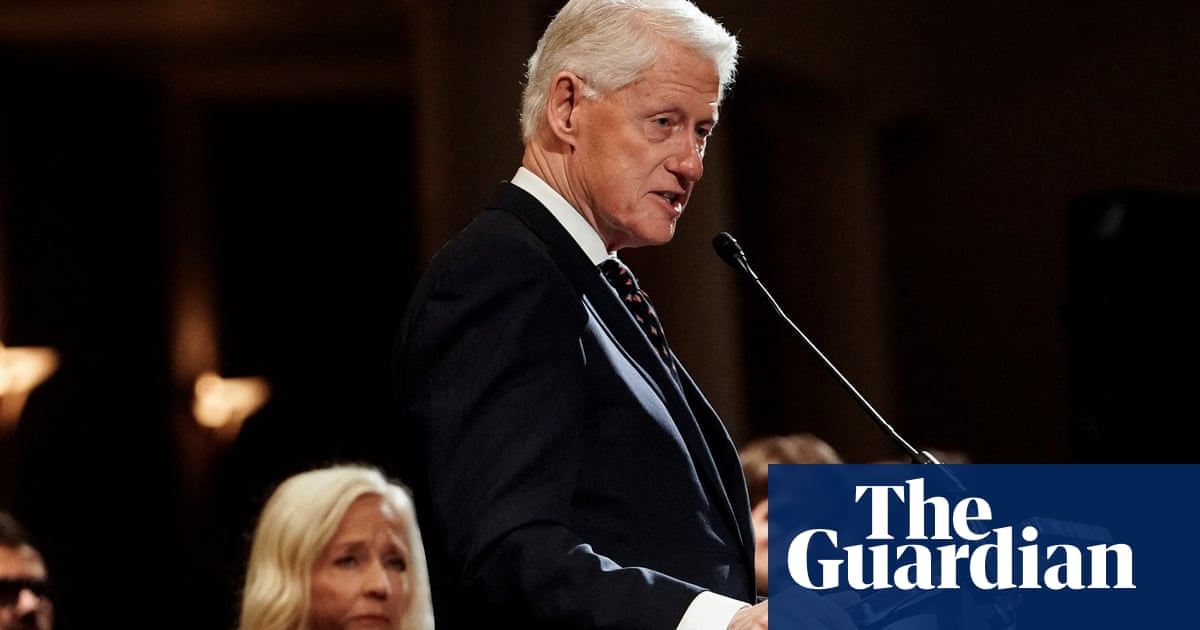Bill Clinton called on Americans to put aside “whose resentments matter most” and issued a defense of government employees as he returned toOklahoma Cityon Saturday for a remembrance service for the 30th anniversary of the deadliest homegrown terrorist attack in US history.
“If our lives are going to be dominated by efforts to dominate people we disagree with, we’re going to put the 250-year-old march toward a more perfect union at risk,” he said. “None of us would ever get much done. Believe me, we’ve all got something to be mad about.”
In stirring remarks, the 78-year-old former president, who was widely praised for how he helped the city grapple with its grief in the aftermath of the 19 April 1995 bombing in which 168 people died, including 19 children, offered a message of unity.
Clinton was just over two years into his first term as president when a truck bomb destroyed a nine-story US government building in the city’s downtown. He described how he was out jogging with the winners of the Boston marathon on the morning of the attack when he learned of the damage that had been done at the Alfred P Murrah federal building. “Thirty years ago, I thought I was going to have a different day,” he said.
“Most of the people who lost their lives were public servants, as we all know,” Clinton said. “What they did every day was a matter of choice, showing up for work, to do business for the American people.”
In his address, Clinton hinted at themes that were extremist in 1995 but have now become more established, noting that “in recent years the country has grown more polarized” and bringing the political forewarnings of theOklahomabombing into the present.
“The terrorist who did this awful thing believed that it would spark a nationwide upheaval against the American government,” he said, “and would eventually destroy our government and democracy.
“A lot of times a fanatic will tell you: ‘Sorry, this, that or the other thing had to happen but, you know, there had to be collateral damage sometimes to make a statement,’” he said. “But I’ve never heard anybody say that who had to live with the damage.”
Clinton said Oklahoma City had offered the country an example of how to manage the response to tragedy. He referred to the “Oklahoma standard”, the resilient attitude described by news media and first responders to the tragedy, which was later embraced by the state and defined as “a statewide initiative preserving and promoting a culture of caring citizens by encouraging acts of service, honor and kindness”.
The “bombing profoundly shook the country, and did more to all of you. But in the end it brought out the best in America,” Clinton told remembrance service attendees, and urged them to spread the same message to other Americans in the current turbulent political moment.
“We can still find a way to move forward together with the Oklahoma standard,” he said. “We were there for you when you needed us. America needs you, and America needs the Oklahoma Standard. We all live by it.”
He also joked that he felt more able to be candid now. “I’m old and can’t run for anything any more,” Clinton said. “I’m almost as old as President Trump.”
